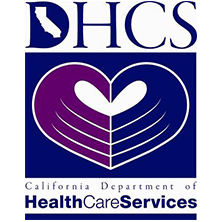TRAUMA TREATMENT: PTSD TREATMENT PROGRAMS
PTSD treatment programs help these people regain the ability to lead normal healthy lives. Post-traumatic stress disorder is a debilitating condition that dramatically encumbers the lives of trauma victims.
WHAT IS PTSD?
Post-traumatic stress disorder (PTSD) is a mental disorder that is caused by traumatic experiences. Essentially, PTSD manifests as an inability to cope with or move on from a traumatic event, trapping trauma victims in a perpetual cycle of reliving their most horrific experiences. PTSD treatment programs aim to free trauma survivors from the constant fear of revisiting traumatic events – a fear that dominates the lives of those who suffer from post-traumatic stress disorder.
The phenomenon of mentally re-experiencing past trauma is commonly referred to as a flashback. Flashbacks, along with recurring nightmares about traumatic events are the fundamental symptom of PTSD. The emotional turmoil that ensues with each flashback is a tremendous amount for the mind to process, which often leads to the phenomenon of dissociation, PTSD’s other key symptom. Dissociation occurs when the mind shuts itself off from emotional input that may cause a flashback as a means of self-protection. Though dissociative patterns may insulate a trauma survivor from emotional pain on a day-to-day basis, the mental barrier they create is strong and becomes a significant roadblock in recovery. PTSD treatment programs work with individuals who have developed dissociative tendencies on reconnecting with their emotions and memories. This step, though painful, must be taken in order for an individual to recover from post-traumatic stress disorder.
WHAT KINDS OF EXPERIENCE CAUSE PTSD?
PTSD treatment programs are designed to accommodate patients whose PTSD results from a wide variety of traumatic experiences. Trauma is defined in terms of an individual’s personal reaction to a situation, not in terms of the situation itself. Therefore, there is no concrete definition of what constitutes a traumatic event. The definition is fluid and must be able to adapt to the experiences of all individuals who exhibit symptoms of PTSD.
That said, there are certain characteristics that tend to apply across the board to traumatic experiences. The primary characteristic of any traumatizing event is a sense of violation. In many cases, this takes the form of a physical violation (e.g. rape, incest, domestic violence). In other cases, this may mean an emotional violation (e.g. loss of a loved one, childhood neglect). A traumatic experience may also violate a person by forcing them to witness a violent or horrific act. Though there is no strict definition of a traumatic event, it is easy to see how countless different experiences might traumatize an individual. PTSD treatment programs work one-on-one with patients to ensure that each individual’s treatment plan is ideally suited to that individual’s particular trauma. Tailoring the recovery program to the patient is an essential aspect of affective trauma treatment.
HOW DO PTSD TREATMENT PROGRAMS WORK?
PTSD treatment programs work by helping trauma victims come to terms with their experiences and cultivate techniques for coping with flashbacks. The delicate issue here is that because trauma is fundamentally a violation, treatment must be executed in a way that maintains the patient’s sense of safety and security at all times. This can be a very complicated prospect when progress in trauma treatment is often contingent upon facing horrifying memories and allowing difficult emotions to surface.
For some who enter PTSD treatment programs, a straightforward cognitive-behavioral approach is appropriate. The cognitive-behavioral model of PTSD treatment involves an in-depth assessment of the original trauma and its aftermath, followed by the development and implementation of a structured plan which will allow the patient to cope effectively with situations likely to trigger a flashback.
Others come into PTSD treatment programs completely incapable of speaking openly about past traumatic experiences. For these individuals, treatment has a different starting point. In order to coax these patients into slowly beginning to explore their trauma, alternative therapies are extremely productive. Therapeutic approaches like equine therapy and art therapy offer trauma victims the opportunity to forge a non-verbal understanding of their experiences. Because traumatic experiences are so powerfully visceral, the brain stores memories of these experiences differently than it stores other memories. The physical bonding that takes place between patient and animal in equine therapy and the hand-eye explorative process that occurs in art therapy act as muses which help patients get in touch with the many levels on which they experienced and continue to relive their trauma.
Additional alternative therapies, namely hypnotherapy and eye movement desensitization and reprocessing (EMDR), can be highly successful as supplements to more traditional cognitive-behavioral PTSD treatment programs. Operating under the same basic treatment model as cognitive-behavioral therapy, both of these disciplines seek to intervene in the patient’s mental processes by building new connections within the brain. In both cases, a structured protocol is used to allow more direct access to the subconscious, where many of a trauma victim’s memories and emotions surrounding trauma are stored.
Effective PTSD treatment programs recognize that no single type of therapy is universally applicable to trauma victims and no specific treatment plan will be successful for all patients. The best programs make a wide variety of treatment options available and encourage patients to experiment with different techniques in order to discover what feels right to them.
LIFE BEYOND PTSD
Though trauma survivors have no culpability in the situations that caused them to develop PTSD, it is up to these individuals to take recovery into their own hands. Though others who love them may want to help, trauma victims must find the motivation to overcome PTSD and the willingness to push through the exhausting emotional work that recovery entails within themselves. With this honest desire to be rid of the burden of PTSD and the therapeutic tools available in a trauma treatment program, victims of trauma have the chance to free themselves. The road may not be easy, but the reward is priceless.
PTSD rarely occurs alone. PTSD has been found to be co-occurring with a number of other mental health disorders, including depression, substance abuse disorders, anxiety disorders, dissociative disorders, eating disorders and borderline personality disorder. Therefore, when it comes to treatment of PTSD, mental health professionals often take into account not only the symptoms of PTSD that a person might be experiencing, but other difficulties as well.
At Safe Harbor Treatment Center for Women and Safe Harbor’s Capella, these issues and others, such as sex and love addiction, are addressed based on the client’s needs. Safe Harbor is a loving community of women that grow together in sobriety. If you, or someone you know, are suffering from the grips of PTSD, drug and alcohol abuse, or any of the aforementioned mental health disorders, call us today at 877-660-7623. We are here to help.
START YOUR JOURNEY WITH
SAFE HARBOR HOUSE
(310) 861-4157
Contact Us Today
Verify Your Insurance




